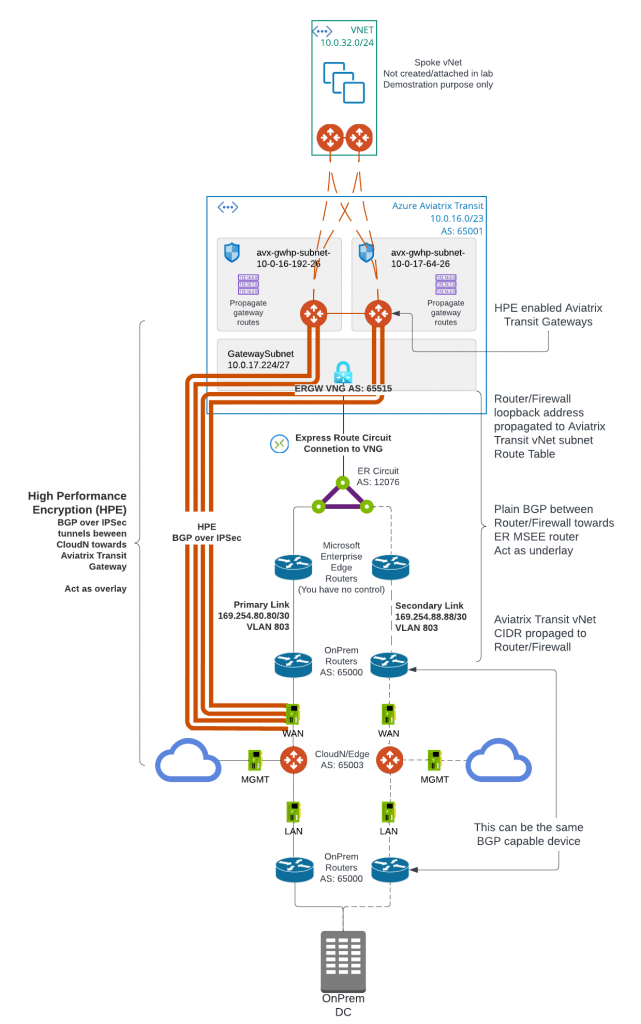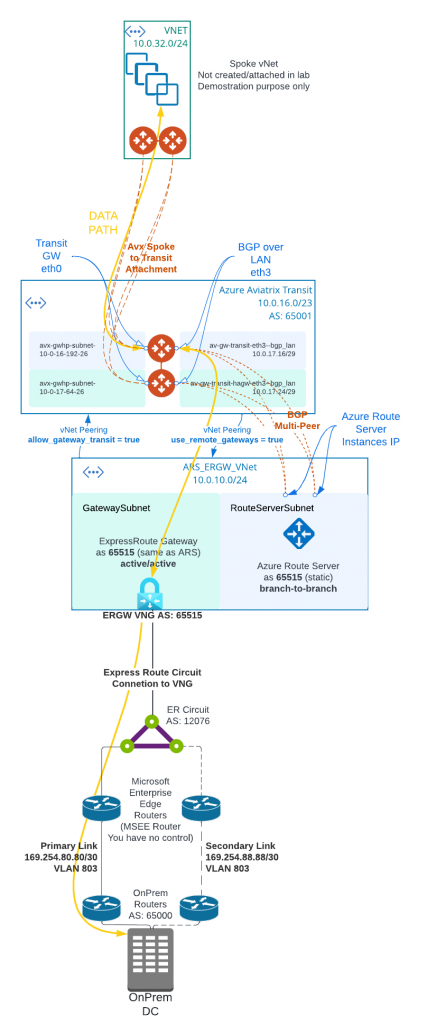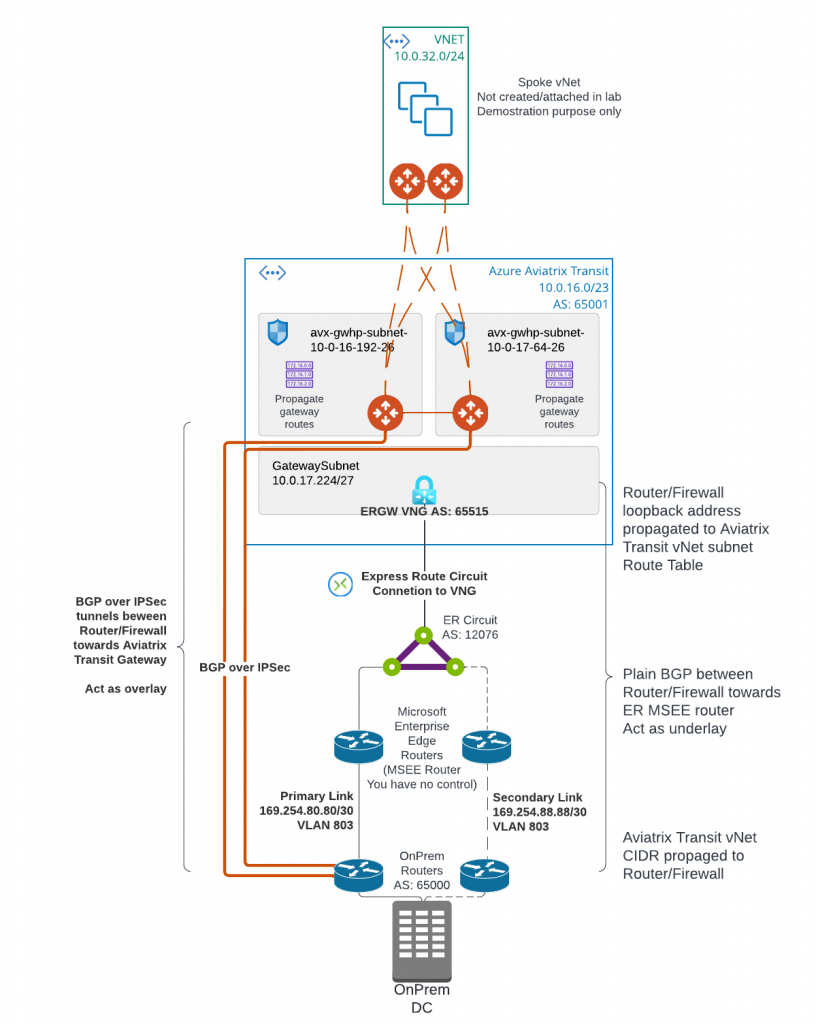In the past blogs, we have reviewed two options to connect from on-premise to Aviatrix Transits:
- Express Route to Aviatrix Transit – Option 1, where we build BGP over IPSec overlay towards Aviatrix transit. This solution have following constrains:
- Each IPSec tunnel have 1.25G throughput limit
- Azure only support IPSec, not GRE as tunneling protocol
- On-premise device must be able to support BGP over IPSec, also it is manual process to build/maintain IPSec tunnels from on-premise device.
- Express Route to Aviatrix Transit – Option 2, where we utilize Azure Route Server and some smart design to bridge the BGP between Aviatrix Transit, Azure Route Server and ExpressRoute Gateway, then towards on-premise device. This solution have fpllowing constrains:
- ARS can only exchange up to 200 routes with ERGW
- No end to end encryption between on-premsie towards Aviatrix Transit, only MACSec can be used between on-premise devices towards Microsoft Enterprise Edge router.
- Brad Hedlund have an excellent blog about the difference: Securing your network connection to the cloud: MACSec vs. IPSec
- Additional architecture complexity/cost and lose operational visibility, also this solution is in Azure only, means you will end up with different architecture in different clouds.
For enterprises moving business critical applications to multi-cloud, needing point to point encryption without sacrificing the throughput, looking for unified solution that can provides enterprise level visibility, control, audibility, standardization and troubleshooting toolsets. Neither above two solution would be ideal. IPsec is industry standard utilized by all Cloud Service Providers, but how are we able to overcome it’s limitation of 1.25Gbps per tunnel?
Aviatrix’s winning formular solves these challenges with it’s patented technology called High Performance Encryption (HPE). It automatically builds multiple IPSec tunnels over either private connectivity such as express route, or over Internet. Aviatrix then combine these tunnels into a logical pipe, to achieve line rate of encryption up to 25Gbps per appliance.
Aviatrix have several products supports HPE from edge locations: CloudN (Physical form factor), Edge 1.0 and Edge 2.0 (Virtual and physical form factor). They can be deployed on-premise data center, co-location, branch offices or retail locations. These edge devices enable customer enterprise grade visibility and control, monitoring and auditing and troubleshooting capability, as well as providing unified architecture for all major Cloud Service Providers. These solutions enable us easily push all the goodies Aviatrix Transit and Spoke architecture from the clouds towards on-premise.
In this blog, we will focus on how CloudN is deployed and connect to Aviatrix Transit. Here below is the architecture diagram:



